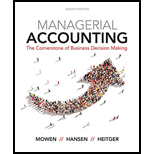
Jack’s Apps Company researches, develops, and sells traditional applications (i.e., apps) for middle-aged mobile phone device users. In an attempt to tap into the large young adult app market to boost sales and advertising revenues. Jack’s CFO, Daniel, is considering hiring students from area high schools and universities to drastically increase the innovativeness of the company’s apps. Specifically, Daniel hopes that Jack’s new student employee pool will make Jack's next wave of phone apps inventions popular with young adults by providing innovative services, such as exchanging payments for late-night food deliveries, arranging informal dating and other social gatherings, exchanging perspectives on different professors, and identifying unusual debit card purchase patterns to assist with early fraud detection notification. Based on cost estimates from Jack’s finance team and surveys of its new target customers (i.e., New Customer Financial Survey), Daniel estimates that this new customer market would increase Jack’s annual net income by $10,000,000.
In addition to the New Customer Financial Survey. Jack’s management team conducted a Business Sustainability Analysis. Specifically, the stakeholder engagement portion of the Business Sustainability Analysis revealed that four of Jack’s most important stakeholder groups (advertisers, regulators, employees, and customers) would react strongly—some favorably and others unfavorably—to the decision to push its app business in the direction of the young adult market. Specifically, ten percent of its existing advertisers would drop Jack’s as a client, thereby reducing its annual advertising revenue of $10,000,000. Also, confidential discussions with competitors suggest that the new fraud detection app would require sensitive customer information that Jack’s would be unable to protect perfectly from data hackers, thereby resulting in annual fines of $1,500,000 from regulators. In addition, employee engagement meetings indicated that they would strongly favor the expansion into the young adult market. Daniel estimates that improved employee morale would significantly increase their productivity and creativity, thereby increasing annual sales revenue by $2,000,000. Finally, focus groups with existing customers revealed that they would highly value the increased workforce diversity of Jack’s hiring a large number of talented young female employees with an expertise in technology. Daniel estimates that this positive customer sentiment would translate into an additional $3,000,000 in annual traditional apps sales.
Required:
- 1. Using the New Customer Financial Survey and the Business Sustainability Analysis calculate the net change in Jack’s Apps Company’s net income that would be expected from pursuing the young adult app market.
- 2. Based on the calculation in Requirement 1, should Jack’s Apps pursue the young adult app market? Explain your answer.
- 3. CONCEPTUAL CONNECTION Describe two additional considerations that Jack’s Apps Company management might be wise to consider before making a final decision on whether or not to pursue the young adult apps market.
Trending nowThis is a popular solution!

Chapter 13 Solutions
Managerial Accounting: The Cornerstone of Business Decision-Making
- What is the company's average collection period of this financial accounting question?arrow_forwardA company's Accounts Receivable balance at Dec. 31 was $120,000, and there was a debit balance of $600 in the Allowance for Doubtful Accounts. The firm estimates that 4% of the A/R will prove to be uncollectible. After the appropriate adjusting entry is made for estimated credit losses, what is the net realizable value of the accounts receivables at year-end?arrow_forwardchoose best answer mearrow_forward
- Need answerarrow_forwardFinancial Accounting Questionarrow_forwardOn July 31, Harrison Company had an Accounts Receivable balance of $25,400. During the month of August, total credits to Accounts Receivable were $68,000 from customer payments. The August 31 Accounts Receivable balance was $18,500. What was the amount of credit sales during August? A) $68,000 B) $39,100 C) $61,100 D) $75,900 E) $7,900 helparrow_forward
 Managerial Accounting: The Cornerstone of Busines...AccountingISBN:9781337115773Author:Maryanne M. Mowen, Don R. Hansen, Dan L. HeitgerPublisher:Cengage Learning
Managerial Accounting: The Cornerstone of Busines...AccountingISBN:9781337115773Author:Maryanne M. Mowen, Don R. Hansen, Dan L. HeitgerPublisher:Cengage Learning Intermediate Financial Management (MindTap Course...FinanceISBN:9781337395083Author:Eugene F. Brigham, Phillip R. DavesPublisher:Cengage Learning
Intermediate Financial Management (MindTap Course...FinanceISBN:9781337395083Author:Eugene F. Brigham, Phillip R. DavesPublisher:Cengage Learning- Principles of Accounting Volume 2AccountingISBN:9781947172609Author:OpenStaxPublisher:OpenStax College
 Auditing: A Risk Based-Approach to Conducting a Q...AccountingISBN:9781305080577Author:Karla M Johnstone, Audrey A. Gramling, Larry E. RittenbergPublisher:South-Western College Pub
Auditing: A Risk Based-Approach to Conducting a Q...AccountingISBN:9781305080577Author:Karla M Johnstone, Audrey A. Gramling, Larry E. RittenbergPublisher:South-Western College Pub




